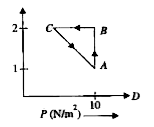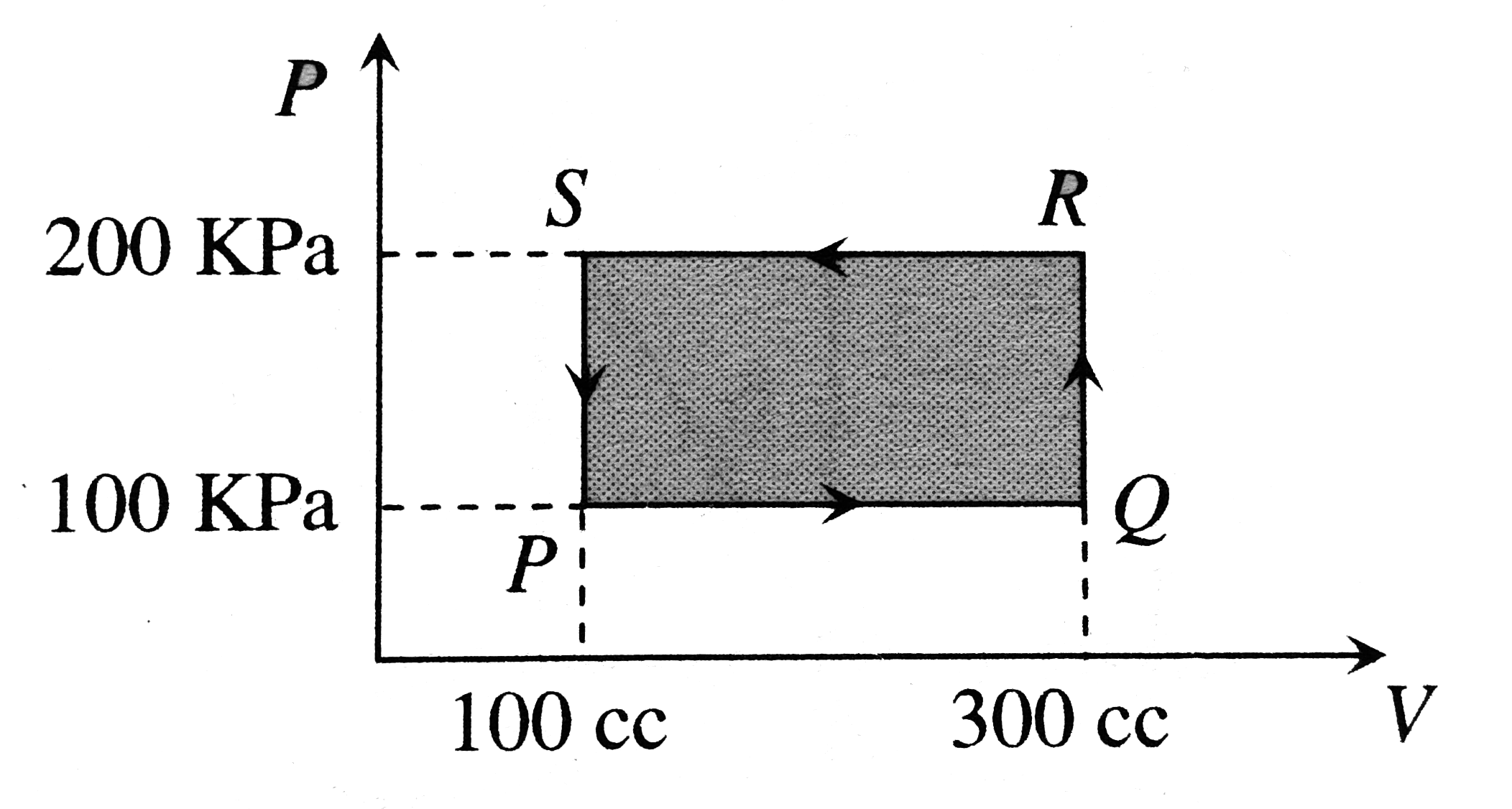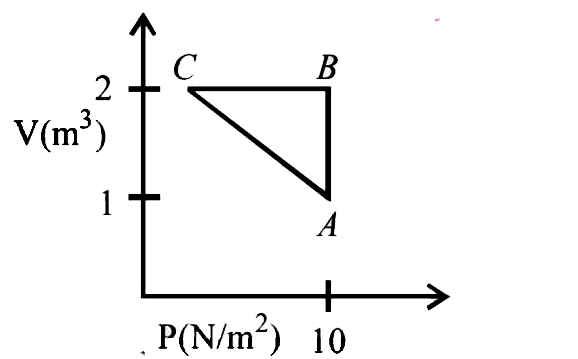In changing the state of a gas adiabatically from an equilibrium state A to another equilibrium state B, an amount of work equal to is done on the system. If the gas is taken from State A to B via a process in which the net heat absorbed by the system is ., How much is the net work done by the system in the later case? (Take )
To solve the problem step by step, we will apply the principles of thermodynamics, particularly focusing on the first law of thermodynamics and the concepts of work and heat transfer.
Step 1: Understand the Adiabatic Process
In the adiabatic process from state A to state B, no heat is exchanged with the surroundings. Therefore, the heat transfer dq=0. The work done on the system is given as WAB=−22.3J (negative because work is done on the system).
Step 2: Apply the First Law of Thermodynamics
The first law of thermodynamics states:
dq=dU+dW
For the adiabatic process, since dq=0:
0=dU+(−22.3J)
This implies:
dU=22.3J
This indicates that the change in internal energy dU is positive, meaning the internal energy of the system has increased.
Step 3: Consider the Non-Adiabatic Process
In the second case, the gas is taken from state A to state B via a process where the net heat absorbed by the system is given as dq=9.35cal. We need to convert this heat into Joules:
dq=9.35cal×4.2J/cal=39.27J
Step 4: Use the First Law Again
Now we can apply the first law of thermodynamics for this process:
dq=dU+dW
Substituting the known values:
39.27J=22.3J+dW
Step 5: Solve for the Work Done dW
Rearranging the equation to find the work done by the system:
dW=39.27J−22.3J
Calculating this gives:
dW=16.97J
Final Answer
The net work done by the system in the latter case is approximately:
17J
In the adiabatic process from state A to state B, no heat is exchanged with the surroundings. Therefore, the heat transfer dq=0. The work done on the system is given as WAB=−22.3J (negative because work is done on the system).
The first law of thermodynamics states:
dq=dU+dW
For the adiabatic process, since dq=0:
0=dU+(−22.3J)
This implies:
dU=22.3J
This indicates that the change in internal energy dU is positive, meaning the internal energy of the system has increased.
In the second case, the gas is taken from state A to state B via a process where the net heat absorbed by the system is given as dq=9.35cal. We need to convert this heat into Joules:
dq=9.35cal×4.2J/cal=39.27J
Now we can apply the first law of thermodynamics for this process:
dq=dU+dW
Substituting the known values:
39.27J=22.3J+dW
Rearranging the equation to find the work done by the system:
dW=39.27J−22.3J
Calculating this gives:
dW=16.97J
The net work done by the system in the latter case is approximately:
17J
Topper's Solved these Questions
Similar Questions
In changing the state of a gas adiabatically from an equilibrium state A to another equilibrium state B, an amount of work equal to 22.3 J is done on the system. If the gas is taken from state A to B, via a process in which the net heat absorbed by the system is 9.35 cal, how much is the net work done by the system in the latter case ?
View SolutionWhen a system is in equilibrium state
View Solution
Knowledge Check
In changing the state of a gas adiabatically from an equilibrium state A to another equilibrium state B an amount of work equal to 22.3 J is done on the system.If the gas is taken from state A to B via a process in which the net heat absorbed by the system is 9.35 cal then the net work done by the system in latter case is
(Take 1 case =4.2 J)A15 JB16 JC17 JD18 JWhen the state of a gas adiabatically changed from an equilibrium state A to another equilibrium state B an amount of work done on the stystem is 35 J. If the gas is taken from state A to B via process in which the net heat absorbed by the system is 12 cal, then the net work done by the system is (1 cal = 4.19 J)
Aa. 13.2JBb. 15.4 JCc. 12.6 JDd. 16.8 JAn ideal gas is taken through cycle A→B→C−A, as shown in Fig. IF the net heat supplied to the gas in the cycle is 5 J, the work done by the gas in the process C→A is
 A−5JB−10JC−15JD−20J
A−5JB−10JC−15JD−20J
For a gaseous system find change in internal energy if the heat supplied to the system is 50 J and work done by the system is 16 J.
View SolutionFor a gaseous system find change in internal energy if the heat supplied to the system is 50 J and work done by the system is 16 J.
View SolutionA thermodynamic system is taken through the cyclic PQRSP process. The net work done by the system is

View SolutionA thermodynamic system is taken through the cyclic PQRSP process. The net work done by the system is

View SolutionAn ideal gas is taken through the cycle A→B→C→A, as shown in the figure, If the net heat supplied to the gas in the cycle is 5J, the work done by the gas in the process CtoA is

View Solution
